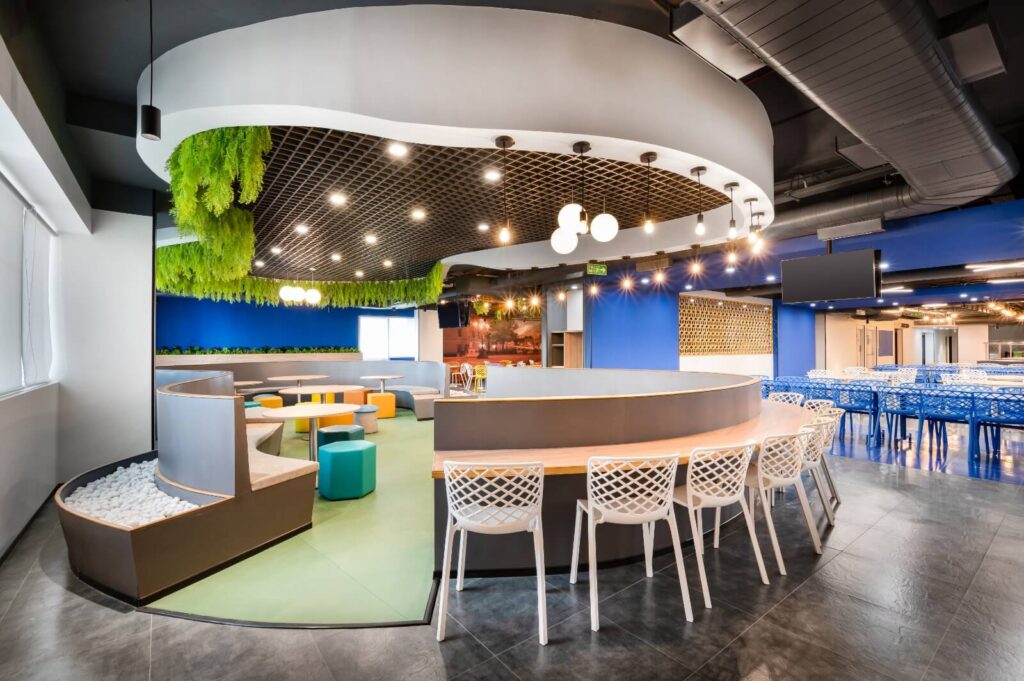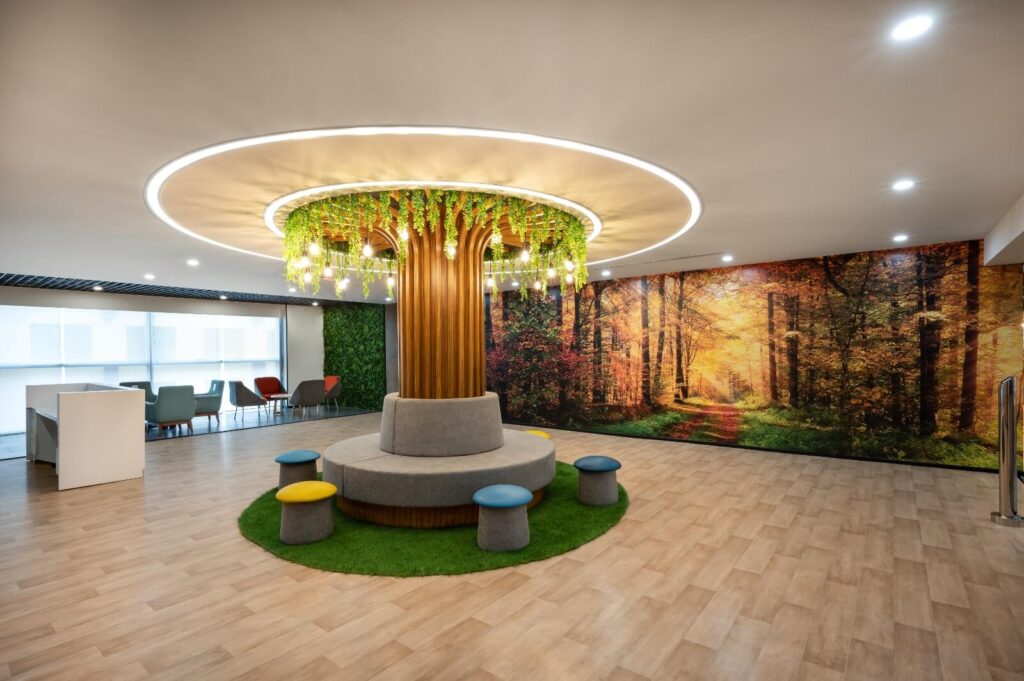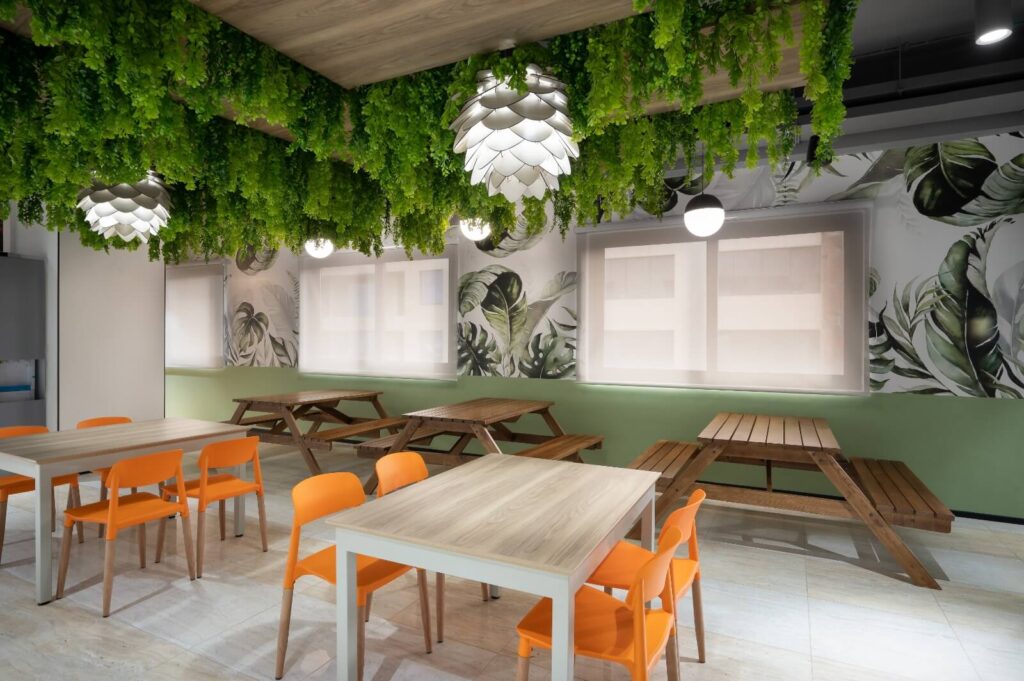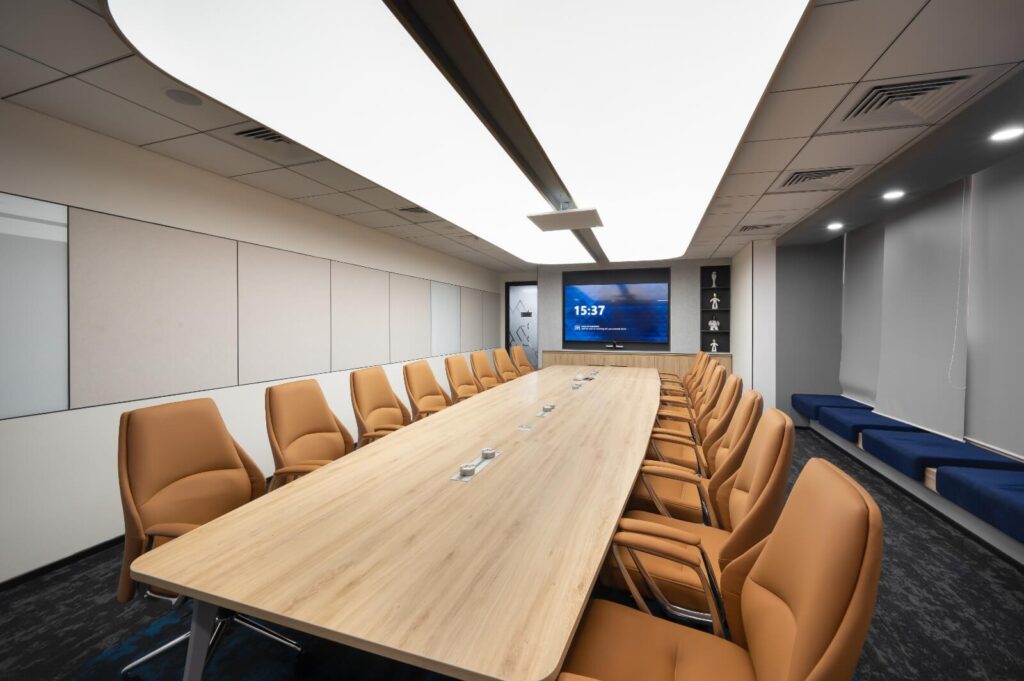No. In fact, a workspace can be well-lit using sustainable designs.
Have you ever wondered about office lighting that’s eco-friendly but also lights up your workspace well? Yes, it is possible. When we step into the world of sustainable lighting, we can understand how LED Light Fixtures, Smart Lighting controls, Daylight Harvesting systems, Lighting Retrofits, etc can brighten your day at work.
Imagine lighting that’s both kind to the planet and your eyes. Thus, think of this blog as a secret recipe for a well-lit, eco-conscious office space.
So, what is energy-efficient lighting? Is it only about using natural light? Or maximizing the output of light?
The answer is NO.
Sustainable lighting talks about longevity, durability, lower carbon emissions, non-toxic materials, adaptation of smart technologies, integration with design & nature etc. Sustainable lighting is about:
- User comfort
- Quality of illumination
- Environment impact
- Human-centric designs
- Compliance with regulations and standards
- Reducing reliance on artificial lighting during the daytime
Thus, sustainable or energy-efficient lighting is a comprehensive approach. It aims to include fixtures that simulate natural light to reduce eye strain and support better health. Further, the versatility of energy-efficient lighting allows workspaces to cater to various activities, user preferences, and moods.
Now, let’s look at some examples of energy-efficient lighting in a workspace:
1. LED Lighting Workspaces
LED bulbs are the best example of energy-efficient lighting in a workspace as they consume less energy when compared to traditional bulbs. In addition, LEDs come with a longer lifespan too. LEDs provide adjustable and bright light without making you compromise on the quality of illumination.

2. Daylight Harvesting System (DHS)
Daylight Harvesting System means strategically planning the input of natural light within your workspace. For instance, designing workspaces with ample access to natural light reduces the need for artificial lighting during daylight hours. Light shelves, strategically placed windows, skylights can efficiently brighten spaces without relying on traditional/electric lights.

3. Smart Lighting Controls
Installing smart timers and sensors that adapt lighting to natural light levels and occupancy can work wonders for sustainability. These controls curtail unnecessary energy consumption by ensuring lights are active only when required.
A complete Smart Light Management System encompasses various features: occupancy-based activation, daylight harvesting, and zone-specific controls, all monitored through a centralized dashboard. This automated system responds to space demands, adjusting lighting in meeting rooms, cabins, and common areas to ensure optimal comfort for all employees. Alongside, daylight harvesting sensors optimize artificial lights by capturing and synchronizing with natural sunlight, offering a smart solution that balances both light sources for efficiency and a comfortable workspace ambiance.

4. Lighting Management System (LMS) through Building Management Systems (BMS)
Picture a smart system that controls all the office lights. It’s like having a switchboard that knows when and where to turn the lights on or off. This helps us save energy because the lights only come on when we really need them, all managed by a clever computer system.

5. Emergency Lighting Systems
Emergency lighting acts as a safety shield for your workplace, ready to brighten specific areas if the main lights fail. Similar to home backup lights during a blackout, these strategically placed lights ensure safe movement until regular lighting returns. Designed to stringent safety standards, emergency lights must operate for a minimum of 90 minutes during power outages or in smoky conditions, as per NFPA regulations. They’re installed in common areas and escape routes, illuminating pathways for safe navigation out of potential hazards. These lights become guiding beacons, offering clear paths to safety in moments of darkness.

In a world embracing sustainability, these tricks stand as a beacon of responsibility and innovation. From saving energy to making the space eco-friendly and bright, adaptation of sustainability goes a long way. Using lights that last longer consumes less power like smart systems and LEDs that adjust automatically.




